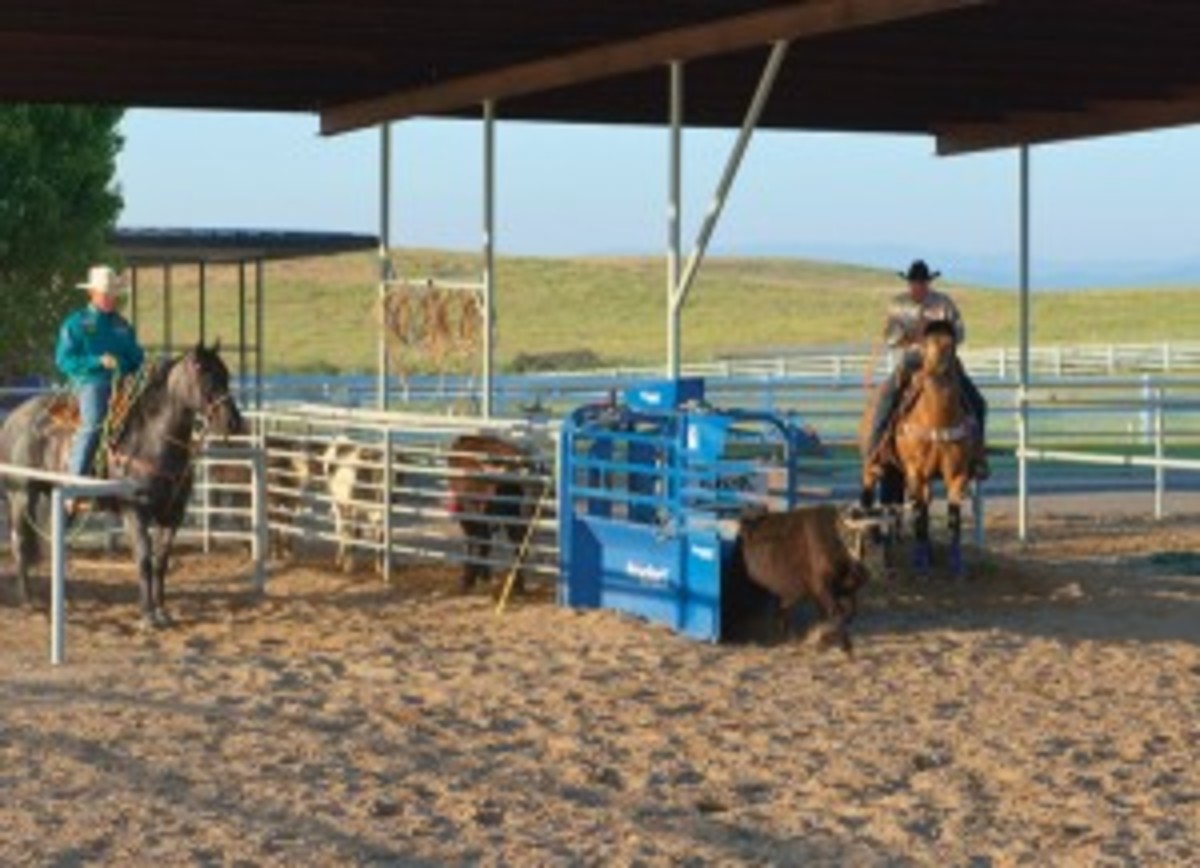When I first started roping years ago, they always taught you to break to the pin when you leave the box. They used to teach you to quarter your horse, so he was turned to the pin, so when he broke he’d break on his left lead. As team roping progressed, we learned to break a little wider. My theory now is that you basically want to build in your position and break your horse toward the middle of the box, so your width is built in when you leave the box. The ideal position is for a steer to run straight or, if you have to be fast, come to you a little bit. If you break to the pin, that’ll put you in behind a steer. Consequently, you have to lean to see the steer. If you catch him, you still have to handle the steer, which is a lot harder when you get in behind one. Nowadays, at the jackpots, the roping producers have figured out that if they put a heeling barrier over there and angle the chutes a touch they can keep steers going right and not circling so bad, because the heelers can’t get out there to haze them.

The reason for positioning your horse to the middle of the box is to give your him the advantage if the steer comes to you. That way, the width of the distance between you and the steer is somewhere between two and four feet. Wider is better than closer. You don’t want to be closer to a steer than that, or if a steer moves in front of you your horse’s front feet can clip that steer’s hind feet. That’s extremely dangerous, and can cause your horse to do a somersault.
You can break your horse right down the rail or wall and be too wide. If you get too wide, you’ll make the steer run away from you. If he’s going away from you and you’re too wide, it’s going to take awhile to make up that ground and close the gap between your horse and the steer. You’re basically giving that steer a big advantage. What you’re looking for is a happy medium. If you’re too far away, you’ll be forced to reach.
If you’re too wide it’ll also affect your handle. When you rope the steer you won’t be able to take ahold of him and break his speed down. Learning that happy medium distance is important, and helps avoid a lot of swing in your handle that comes when you’re too wide.
If you break down the middle of the box, you’re going to be able to react and read that steer’s pattern as you leave the box. If you see him going right, you can automatically start pushing your horse to the right so you can catch up quicker. You can also see it coming if that steer’s coming to you, and can in turn be ready to rope him quicker.
If you break too close to the pin, you’ll also tend to break that steer back over himself too much, which makes for a rough handle that doesn’t have much timing to it. If the steer goes hard left and you get a shot off and catch him, to try to get away from that steer you’re going to have to come straight back. That’s a hard shot for your heeler to have to make. It’s a rough corner, and steers in that situation tend to hit then shoot up the rope real fast.
Lower numbered ropers tend to quarter their horses a little in the box. Producers with that heeling barrier want steers to run to the right, so that position works in that situation. When it doesn’t work is when you start roping with higher numbered heelers that get out there quicker and step steers over to the header more. When a lower numbered header isn’t used to that, it can be tough to maneuver his horse over to the left. That makes it extremely hard to get a shot, because they can’t get their horse out around the steer. If they don’t take their shot, then once they get their horse out around that steer the steer tends to go to the right, because the heeler can only hold that steer so long. That gives that steer a chance to outmaneuver the header again, and by that time you’ve usually run out of arena and are forced into a desperation, low-percentage shot. SWR










